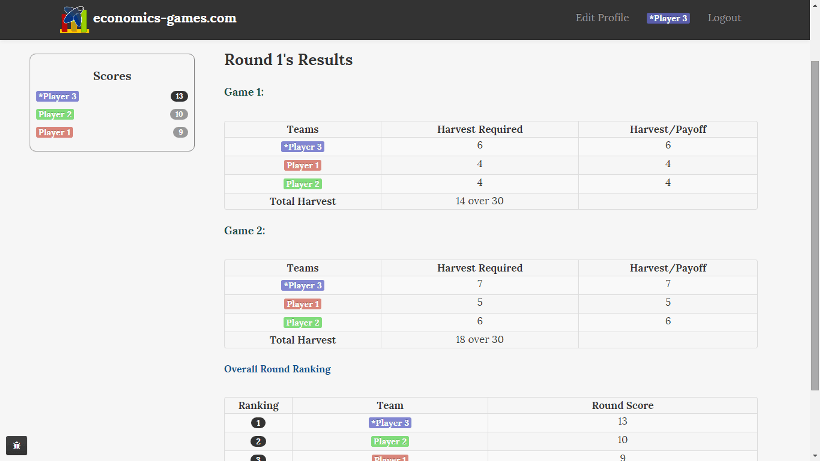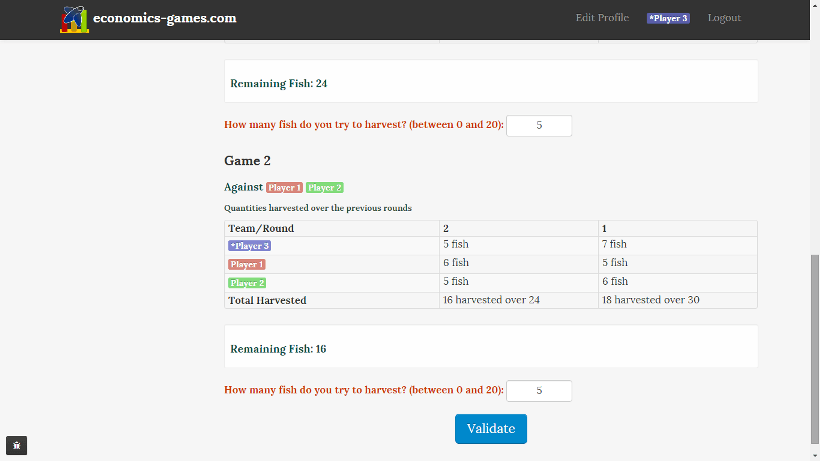The Tragedy of the Commons Game
Introducing externalities and the problem of common-pool resources
Players jointly own a renewable resource and must make harvesting decisions over a number of periods. This is the classic experiment created by Denise Hazlett ("A Common Property Experiment with a Renewable Resource." Economic Inquiry, 35, October 1997, pp. 858-861), also described in the great site, games economists play (game #75).

Rules as explained to players:
You are responsible for managing a fishery. You jointly own a common pool with many other players, and must make harvesting decisions over a number of periods.
At the beginning of the first period the number of fish in the pool equals 10 times the number of players in the experiment. This amount is the maximum number of fish that can be in the pool, there can never be more than this!
In each period, each of you enter the number that you desire to harvest (max 20 by period). If the "total desired harvest is less than or equal to the number of fish in the pool, then each person takes their desired harvest. If the total desired harvest exceeds the number of fish in the pool, then each of you gets a prorated share of the total harvest.
The fish left after harvest will reproduce, provided a viable population remains. This limit is taken to be equal to one fish by player in the pool, in order to allow for experiments with few players, or even only one player (in the original experiment, this limit was 8). If a viable population remains, then each fish has one offspring, so that the total number of fish will double (if possible, remember there can never be more fish than at the beginning of the experiment). After reproduction, another period begins. If the number of remaining fish after the harvest is less than the viable population limit, the population crashes, and the experiment ends. Otherwise, the experiment continues for a predetermined (though unknown to you) number of periods.
In fact, you will play two of these games at the same time, with random players from your class. The same players will remain in the same universes until the end.
Your overall payoffs are compared to those of everyone else in the class. Your goal is to maximize your payoff, not just to be better than the players you are faced with.

Game details:
Each player will take part to 2 experiments simultaneously.
Choose the number of players and the number of different universes: If there are 32 players and you choose 3 universes, the students will be randomly spread across 3 universes (two with 11 students and one with ten) for the first experiment and across 3 other universes for the second experiment.
Having several universes ensures that players really have incentives to pay more attention to payoffs and less attention to their ranking inside their experiments. Indeed, a player who is the first in an extremely competitive experiment might end up with a bad overall ranking.
You can also run several experiments with different numbers of universes to stress the impact of the number of players on overfishing. If you take as many universes as there are players, each player will be the only one to harvest fish in its pools.



